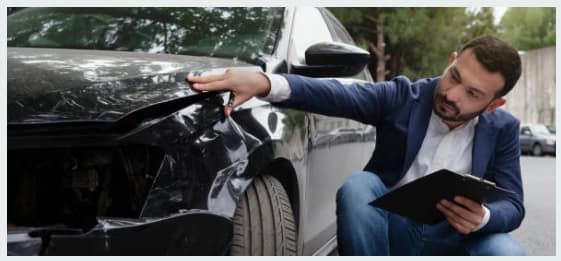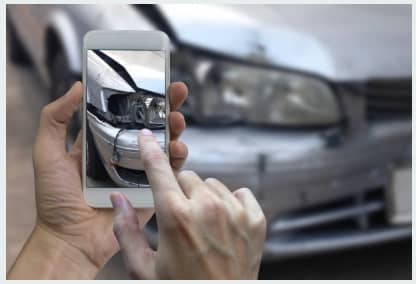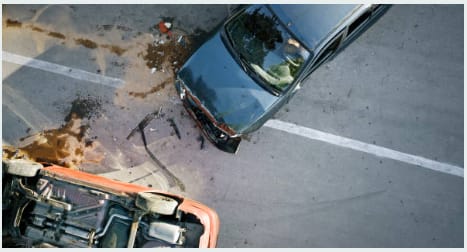Understanding Automobile Insurance Deductibles
Introduction
automobile accidents are a common occurrence, and when they happen, one of the first questions that arise is: Who pays the deductible? Understanding how deductibles work in automobile insurance is essential for both policyholders and those involved in accidents. In this comprehensive guide, we will explore the intricacies of automobile insurance deductibles, discussing who typically pays them, how they affect claims, and how policyholders can make informed decisions.
Section 1: The Basics of Automobile Insurance Deductibles
1.1 What is an Automobile Insurance Deductible?
An automobile insurance deductible is the amount of money a policyholder is responsible for paying out of pocket before their insurance company begins covering the cost of an accident or loss. Deductibles serve several important purposes within the insurance framework:
- Risk Sharing: Deductibles encourage policyholders to share in the financial responsibility for claims, preventing them from making frequent small claims that could increase premiums for everyone.
- Cost Control: By choosing a deductible amount, policyholders can have some control over their insurance premiums. Higher deductibles often result in lower premiums, while lower deductibles lead to higher premiums.
- Emergency Fund: Deductibles ensure that policyholders have funds readily available in case of an accident or loss. It acts as a safety net to cover immediate expenses.
1.2 Types of Deductibles
- Collision Deductible: This deductible applies when the policyholder’s vehicle is damaged in a collision, regardless of fault. For example, if you have a $500 collision deductible and the repair cost is $2,000, you pay the first $500, and your insurance covers the remaining $1,500.
- Comprehensive Deductible: This deductible applies to non-collision incidents, such as theft, vandalism, fire, or natural disasters. Similar to collision coverage, the policyholder pays the deductible, and the insurer covers the remaining costs.
1.3 Deductible Amounts
Policyholders typically have the flexibility to choose their deductible amounts when purchasing or renewing their auto insurance policies. Deductibles can range from as low as $100 to $1,000 or more. The choice of deductible amount has a direct impact on insurance premiums.

Section 2: Who Pays the Deductible in an Automobile Accident?
2.1 Determining Fault in an Accident
In the context of an automobile accident, who pays the deductible largely depends on the determination of fault. Each accident is assessed to establish which party is responsible. Insurance companies and sometimes law enforcement agencies investigate accidents, gather evidence, and assign fault percentages or classifications.
- At-Fault Party: When one driver is deemed entirely at fault for the accident, their insurance policy will typically be responsible for covering both their own property damage and the property damage of the other party. The at-fault driver pays their deductible.
- Partial Fault: In cases where both drivers share some responsibility, each party’s insurance company may cover a portion of the damages based on the degree of fault assigned. Each driver’s deductible applies to their share of the costs.
- No-Fault States: Some states have “no-fault” insurance systems where each driver’s own insurance pays for their damages, regardless of fault. In such cases, policyholders would be responsible for their deductibles regardless of who is at fault.

2.2 Deductible Payment Process
After the fault is determined, the deductible payment process unfolds:
- At-Fault Party Pays Their Deductible: If you are deemed at fault for the accident, you will pay your deductible to your own insurance company when you make a claim.
- Claim Settlement: Once the deductible is paid, your insurance company will handle the claim. They will assess the total repair or replacement cost, minus the deductible, and provide compensation accordingly. If the damages exceed the deductible amount, you will receive the difference.
- Collecting from the At-Fault Party: In some cases, if you are not at fault, your insurance company may cover the repair costs upfront, minus your deductible. They will then seek reimbursement from the at-fault party’s insurance company. Once reimbursed, your insurance company will refund your deductible.
2.3 Deductible Considerations
- Uninsured/Underinsured Motorist Coverage: If the at-fault party is uninsured or underinsured, your insurance company may cover the costs under your uninsured/underinsured motorist coverage. In such cases, your deductible may still apply, but it could be recoverable through legal action against the at-fault party.
- Waiver of Deductible: Some insurance policies offer a deductible waiver or reduction in specific circumstances. For instance, your deductible may be waived if you can identify and prove the at-fault party in a hit-and-run accident.
- Glass Damage: In some policies, glass damage, such as windshield cracks, may have a separate deductible or even be covered without a deductible, depending on the insurance company and policy.
Section 3: Strategies for Managing Deductibles
3.1 Selecting the Right Deductible
Choosing the appropriate deductible is a critical decision when purchasing auto insurance. Here are factors to consider:
- Budget: Consider your financial situation. Opting for a higher deductible can lower your premiums but requires you to have sufficient funds to cover it in case of an accident.
- Driving Habits: Assess your driving habits and the likelihood of accidents. If you rarely drive or have an excellent driving record, a higher deductible may be suitable.
- Vehicle Value: The value of your vehicle matters. If you drive an older, less valuable car, a higher deductible may make more financial sense.
- Insurance Premiums: Obtain quotes with different deductible levels to understand how they affect your premiums. Find a balance that suits your budget and coverage needs.
3.2 Emergency Fund
To comfortably manage a deductible, maintain an emergency fund. Having savings equivalent to your deductible ensures that you can promptly cover the cost in the event of an accident, minimizing financial stress.
3.3 Optional Coverages
Explore optional coverages that can help reduce or eliminate deductibles. Some insurance providers offer vanishing deductibles, where your deductible decreases over time if you remain accident-free.

Section 4: Conclusion and Key Takeaways
Automobile insurance deductibles are a fundamental component of the insurance process. Understanding who pays the deductible in an automobile accident depends on fault determination, policy terms, and the specific circumstances of the accident. Key takeaways from this guide include:
- Policyholders are responsible for paying their deductible when they are at fault or when no-fault insurance rules apply.
- Deductible payment is typically made upfront to the policyholder’s own insurance company.
- In cases where the at-fault party is identified, insurance companies may seek reimbursement, including the policyholder’s deductible.
- Selecting an appropriate deductible involves considering budget, driving habits, vehicle value, and insurance premium implications.
- Maintaining an emergency fund is a prudent financial strategy to cover deductible costs.
- Optional coverages, such as vanishing deductibles, may help policyholders reduce or eliminate deductibles over time.
In summary, automobile insurance deductibles play a crucial role in managing risk and insurance premiums. Policyholders should carefully
